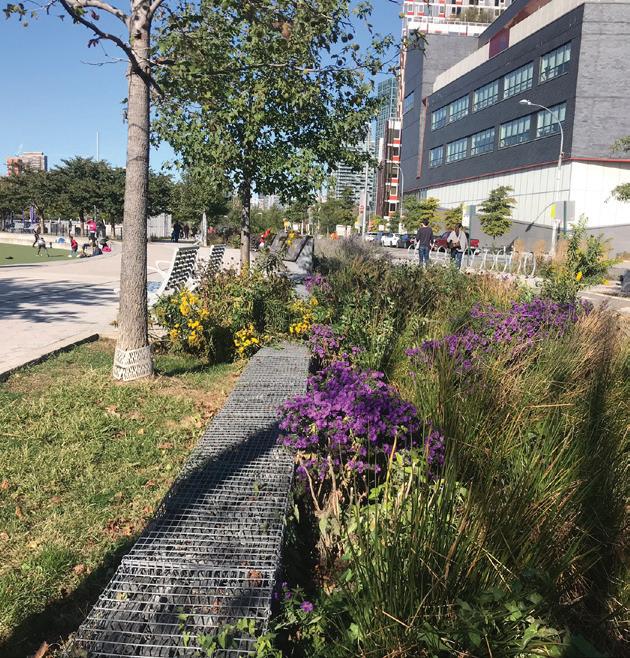
3 minute read
Urban Ecology: Creating Hunters Point South Waterfront Park
Not so long ago, Hunters Point South Waterfront Park was nothing but an abandoned industrial center and an eyesore on the East River skyline. Today, the park has become a haven for runners, picnickers, sightseers, and kayakers. In 2013, New York City Parks opened the first phase of Hunters Point South. In 2018, the second phase of the park was completed. This phase added an additional five and a half acres of recreation area including a kayak launch, a workout circuit, and picnic areas. However, creating recreation areas was not the only purpose of the park. It was also designed to provide the city protection from flooding and storm surges.
Before Hurricane Sandy, flood protection in the Northeast was primarily done with bulkheads, concrete or wooden walls that held back stormwater. Bulkheads are effective at stopping water but they do not dispel the wave energy, they merely redirect it. This often leads to water erosion elsewhere along the bank or damage to the bulkhead itself. You may have noticed this yourself if you have visited the bay during a
Advertisement

storm. The goal at Hunters Point was not to use hard infrastructure like bulkheads to slow stormwaters, but to use soft infrastructure, which primarily employs plants, to create a living shoreline and dispel wave energy. The shoreline of the park was outlined in rip rap, a rock piling that helped diffuse wave energy. Behind the rock structure would be designed wetlands that would slow and capture rising flood waters before they could rush into the buildings behind the park. At the time, this was a fairly new practice, especially in an urban setting. In addition to their flood catching capabilities, the native wetland plants also supplied a number of ecological functions, such as carbon sequestration and forage and habitat for pollinators and wildlife.


including the wetlands designed for flood control. Scenic Designs had a stellar track record for ecological restoration work in the New York City area, completing jobs in Brooklyn, Fire Island, White Plains, and Little Neck. Martha Weller of Scenic Designs had this to say about the project, “Scenic was subcontracted by Galvin Brothers, Inc. to install the landscape. There were many challenges in constructing the park, particularly erecting the overlook for Galvin. For Scenic, many of the challenges were related to traversing the site with extreme elevation changes during grading and planting operations and the high density of planting especially on steep slopes. Additional challenges included securing plant material and staying on schedule following completion of construction. The planting plan called for over 650 large trees, 13,500 shrubs, and 22,550 grasses and perennials. We relied on Pinelands heavily to supply most of the wetland plant material which comprised 64,800 herbaceous plugs and 950 shrubs of the entire plant list. Knowing that Pinelands had us covered on the wetland material was a huge relief because of their high quality plant production and ability to be incredibly accommodating to schedule and delivery changes. In addition to our confidence in the product from Pinelands, the staff are among the most pleasurable and competent people in the industry. I can’t imagine doing what we do without being able to rely on Pinelands for our many large scale restoration and native installations.”
For more information on Hunter’s Point Park South please visit:
https://www.nycgovparks.org/parks/hunterspoint-south-park/pressrelease/21586




